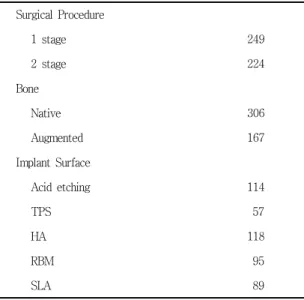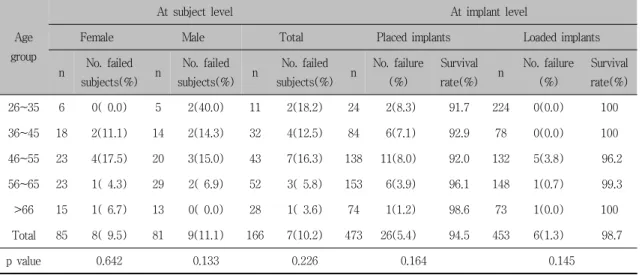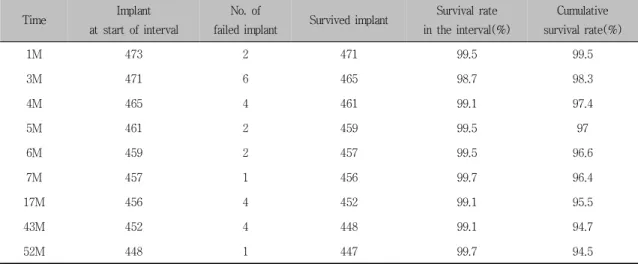상 ․ 하악 대구치 부위에 식립된 임플란트의 생존율에 대한 후향적 연구
전체 글
수치




관련 문서
Suppose that the average annual safe rate is 2% lower than the growth rate, so that ER f , the gross rate of return over a unit period—say 25 years—is 0.98 25 = 0.6, then
1 John Owen, Justification by Faith Alone, in The Works of John Owen, ed. John Bolt, trans. Scott Clark, "Do This and Live: Christ's Active Obedience as the
Specifically, the prevalence and incidence rates of cancer among chronic diseases are continuously increasing, while early diagnosis and treatment of cancer
Objectives: This study was performed to examine the utilization rates of preventive health services including flu vaccination, general health and cancer screenings among
Data represent the mean ±SD of Three separate experiments; the statistical significance of differences between each treatment group and the control (**P < 0.01, *P
The lateral condylar inclinations of ARCUSdigma 2 were statistically significantly smaller than that of checkbite method.(p<.05).. 교합기는 용도에
The OSFE (osteotome sinus floor elevation) technique has been used for maxillary sinus augmentation.. The implants were clinically and radiographically followed
In the control group, lifestyle-related factors were significantly different only in blood glucose (p <.01) and there was no significant difference in


